Mihwangsa Temple (미황사)
0m 18948 2021-08-14
164, Mihwangsa-gil, Haenam-gun, Jeollanam-do
+82-61-533-3521
Constructed during the eighth year of King Gyeongdeok of the Silla dynasty (749), Mihwangsa Temple is located on the western side of Dalmasan Mountain (489 meters), titled the Geumgangsan Mountain of the Southern Sea. The temple is situated the furthest south of all temples in the Korean peninsula. Beautiful sunsets and the view of the graceful Dalmasan Mountain from the temple attract numerous visitors. The foot of the mountain found behind the temple blends well with the suitable-sized temple and the appearance of Daeungbojeon Hall gives out an aura of comfort and tranquility. The cornerstone of Daeungbojeon Hall is carved with sea creatures, such as turtles and crabs that cannot be observed elsewhere. Other attractions include 18th century murals on the walls of Daeungbojeon and Unginjeon Halls.
Ttangkkut Marine Natural History Museum (땅끝해양자연사박물관)
6.4 Km 8954 2021-02-22
5-4, Jungdaedong-gil, Haenam-gun, Jeollanam-do
+82-61-535-2110
The Ttangkkeut Marine History Museum houses approximately 25,000 specimens with 40,000 pieces on display including shellfish, coral, fish, mammals, crustaceans, fossils, reptiles, and insects from around the world, making it the most diverse collection of items in the southern region. Visitors can take part in ecological activities to learn more about phenomenal and rare marine resources and cultures.
Haemaru healingsoup [Korea Quality] / 해마루 힐링숲 [한국관광 품질인증]
8.0 Km 5747 2020-12-12
108-35, Donghae-gil Bukpyeong-myeon, Haenam-gun, Jeollanam-do
+82-10-2332-6303
'Haemaru Healing Forest is a guesthouse situated at the foot of Duryunsan Mountain, Haenam in front of Wondo Beach and surrounded by a cypress grove. The mountain, cypress grove, and beach are all visible from the main floored hall room. For this reason, many of the guests who stayed here say that the picturesque view seems to change day by day. The town where the guesthouse is located is specially designed as a 'hanok village,' consisting mostly of traditional Korean houses of Jeollanam-do. It is also widely known as 'Haenam Kimchi Village' because of their famous cabbages, which are grown in the natural environment and are used to make kimchi. Specifically, there are three villages in this area: 'Green Experience Village,' 'Farm Stay Village,' and 'Resort Village.' There is a public swimming pool in the area managed by the villagers and is very popular among visitors, with ticket sales reaching KRW 100,000,000 a year. One of the advantages of staying at this guesthouse is that it’s within a one-hour ride to a number of popular nature destinations such as Wando Cheongsando Island, Gangjin Dasan Chodang, Jangheung Cheongwansan Mountain, Woodland, and Yeongam Wolchunsan Mountain. Haenam is known as one of the best regions of Korea for enjoying the famous Jeolla-do cuisine, so visitors to Haenam are advised to try the local food. The villagers built these traditional Korean guesthouses so that their visitors can have a day of relaxation in nature, away from their hectic city life. With this mind, they used natural pinewood and red clay from Gangwon-do to build authentic traditional Korean houses and utilized traditional Korean tiles from Goryeong. The name 'Haemaru Healing Forest' was given by the owner of the guesthouse, with the subtitle 'A place where you can tell your story.' The guesthouse buildings are in 'ㄱ' shape. The main building, called 'anchae' in Korean, has floor area of 72m², which is big enough for up to 25 people. There are two rooms, a large living room, and a kitchen in this building. The rooms are furnished with sofa, television, air conditioner, refrigerator, and table just like an ordinary home so that guests can feel at home during their stay. The 'bakkatchae,' or 'detached house,' is a single room with capacity of 6 and is furnished with air conditioner and bathroom. The guesthouse is owned by a couple who still work in Seoul and need to travel back and forth between Seoul and Haenam frequently. They're both nature lovers, so their most favorite place in the house is the kitchen garden where they cultivate their own organic lettuce, perilla leaves, and chili peppers. The kitchen garden is open to guests who want to try the homegrown organic vegetables. Various experience programs are offered here as well, such as yunnori, dadeumi, jwibulnori, and kimchi making. Jwibulnori is a traditional Korean game played on the eve of Daeboreum or First Full Moon Day, where people burn dry grass on the ridges of rice paddies and fields and others spin cans of flames attached to the end of a stick or a sling. For safety reasons, this game is played with the consent and participation of the villagers, so be sure to ask the owner of the guesthouse when the game is played. It’s free for groups of more than 10 people. As for the kimchi-making class, it is offered by the guesthouse owner's younger brother and sister-in-law who live and run a kimchi factory in the village. They will teach you how to make kimchi, step-by-step, start to end. The kimchi-making class is a paid program, so be sure to ask the guesthouse owner how much and when the class is held.
Wando Arboretum (완도수목원)
8.0 Km 37052 2021-04-02
156, Chopyeong 1-gil, Wando-gun, Jeollanam-do
+82-61-550-1544
Wando Arboretum features the largest and oldest broadleaf evergreen colony in the nation, along with over 3,800 other flora on a grand plot of land. The arboretum is comprised of an exhibition hall, greenhouses, walking paths, an observatory, campground, basketball court, and more.
Created in 1991, Wando Arboretum is the only warm temperate arboretum in Korea where only 15% of the landscape is considered a warm temperate region. The broadleaf evergreen tree forest has high medicinal value, and is home to many species of rare warm temperate plants such as goodyera, calanthe striata, and cephalanthera falcata. There are 30 special gardens based on different plant types. From the observatory, visitors can enjoy the view of Dadohaehaesang National Park and the southern sea. The observatory offers an opportunity to educate visitors on nature and the environment and allows them to take a rest during their visit.
Songho Beach (송호해수욕장)
9.2 Km 10768 2021-11-23
1827, Ttangkkeutaean-ro, Haenam-gun, Jeollanam-do
+82-61-532-1330
Songho Beach is the most representative beach in Haenam and was named so for its dense old pine trees, fine sand, and shallow water resembling a lake. The fine sand and shallow waters make it the perfect beach for families. Hundreds of pine trees create a scenic forest reaching almost 1 kilometer along the levee which provides a suitable camping site under in the forest. The Ttangkkeut Trail that starts from Songho Beach auto-campgrond connects to Galsan Village and Ttangkkeut Tower.
The windbreak pine forest in Songho-ri, Haenam is designated as Jeollanam-do Natural Monument, consisting of at least 600 pine trees aged 200 years that play a vital role in the coastal shelterbelt.
Galdu Village (Ttangkkeut Village) (갈두마을 (땅끝마을))
10.2 Km 28910 2020-06-17
82, Ttangkkeunmaeul-gil, Haenam-gun, Jeollanam-do
+82-61-532-3883
Galdu Village, also referred to as Ttangkkeut (Land's-end) Village in Haenam-gun, Jeollanam-do is at the southernmost point of the Korean peninsula. The island has an observatory at Sajabong Peak, where one can get an unobstructed view of the southern archipelago, and even a glimpse of Hallsan Mountain on Jeju Island on a clear day. The name "galdu" originated from the Chinese characters for arrowroot, which was commonly found in the nearby mountains.
Ttangkkeut Sunset & Sunrise Festival (땅끝 해넘이해맞이축제)
10.2 Km 13448 2020-02-12
42, Ttangkkeunmaeul-gil, Haenam-gun, Jeollanam-do
• 1330 Travel Hotline: +82-2-1330 (Korean, English, Japanese, Chinese) • For more info: +82-61-530-5159
Ttangkkeut Sunset & Sunrise Festival takes place annually December 31 - January 1 at Ttangkkuet Village in Haenam-gun, Jeollanam-do. The festival includes a sunset and sunrise ceremony. The festival is famous for the unique view of the sunrise between Hyeongjebawi Rocks next to Galduhang Port.
Maemseom Hoetjip (맴섬횟집)
10.4 Km 114 2021-03-26
60-18, Ttangkkeunmaeul-gil, Haenam-gun, Jeollanam-do
+82-61-533-3561
It provides a course meal menu that lets you enjoy various types of seafood at a time. This restaurant's signature menu is assorted sliced raw fish. This Korean dishes restaurant is located in Haenam-gun, Jeollanam-do.
Ttangkkeut Village (땅끝 관광지)
10.4 Km 23675 2020-06-11
42, Ttangkkeunmaeul-gil, Haenam-gun, Jeollanam-do
+82-61-530-5544
This area is famous as it is on the very tip of the Korean peninsula, located in Galdu-ri of Songji-myeon. This is where Baekdusan Mountain ends reaching the tip of the peninsula. Many people visit the area so they can say they’ve stepped on the end of the land and it has long become a prime destination in Haenam.
At the summit of Sajabong peak there is an observatory that stands 38m high. From the observatory you can get a full viewing of the Dalmasan Mountain in the north while in the east, fishing vessels can be seen skirting deftly on the surface of the sea. Atop the summit of Sajabong peak, there is a restored old beacon (Bonghwadae) which in the past was strategically located to warn of approaching Japanese ships. In the village proper, the area known as Ttangkkeut Village, special events take place to celebrate the end of year and the first day of the New Year, which also draws many tourists to the area from all over the country.
Ttangkkeut Monorail (땅끝모노레일)
10.8 Km 51282 2024-02-20
60-28 Ttangkkeunmaeul-gil, Songji-myeon, Haenam-gun, Jeollanam-do
Ttangkkeut Monorail is a tourist monorail that runs to the Ttangkkeut Village Observatory. It takes about 6 minutes for a one-way trip to the observatory, during which passengers can enjoy the beautiful scenery of Ttangkkeut Village in Haenam, stretching from the mountains to the sea. After enjoying the view from the top, visitors can descend via stairs to reach the Ttangkkeut Tower.
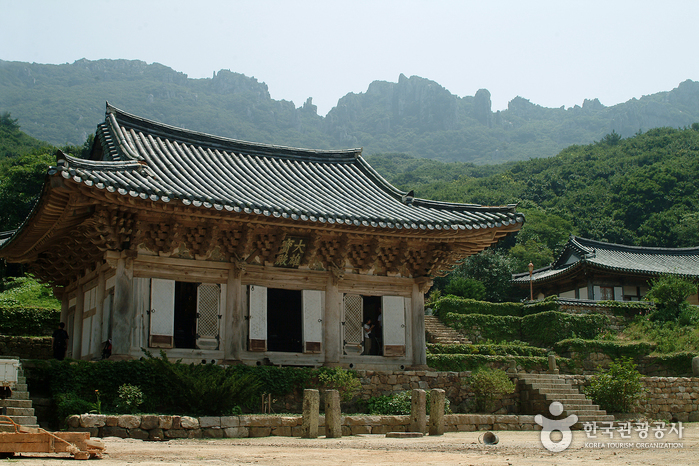
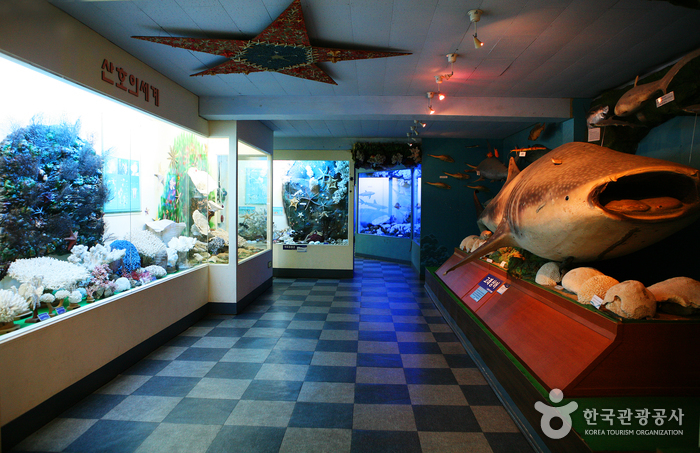
![Haemaru healingsoup [Korea Quality] / 해마루 힐링숲 [한국관광 품질인증]](http://tong.visitkorea.or.kr/cms/resource/35/2049835_image2_1.jpg)

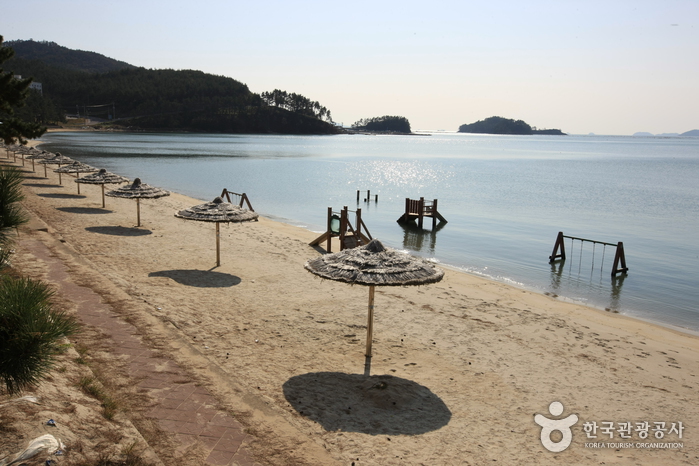
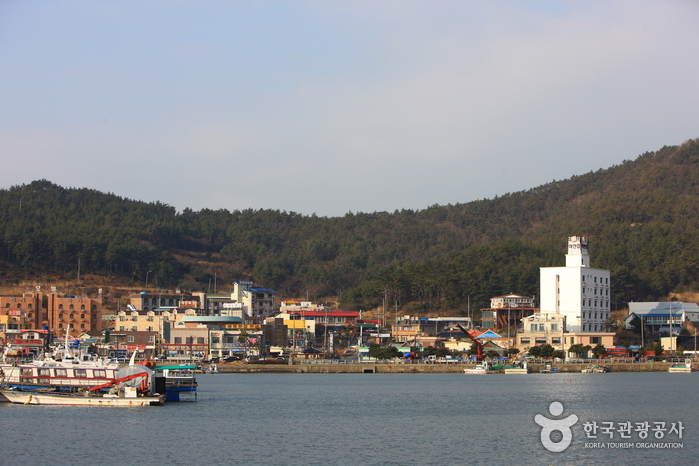
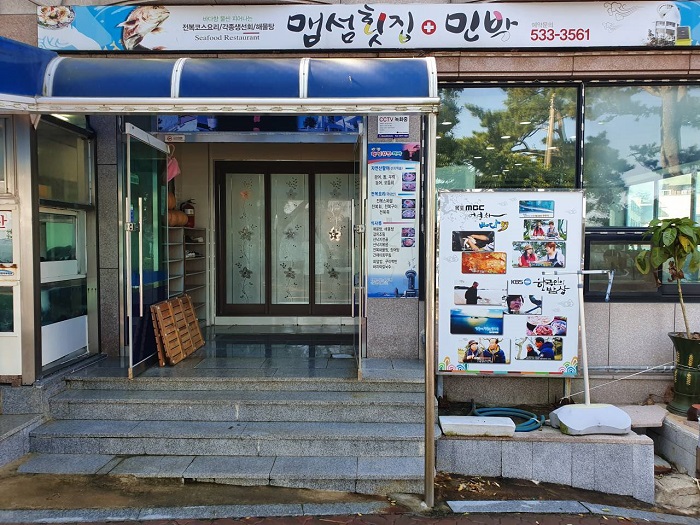
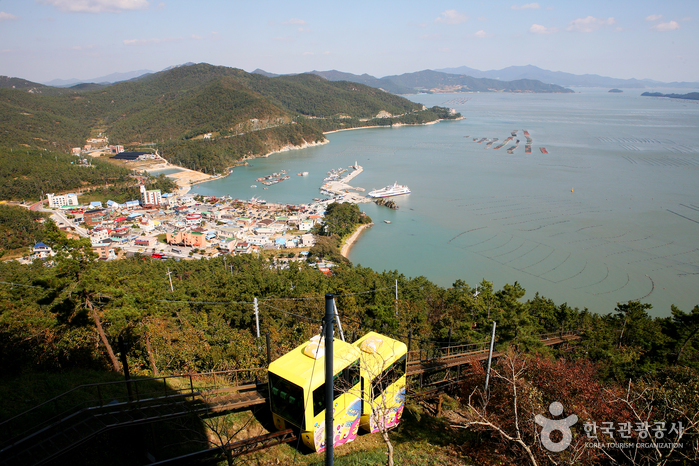
 English
English
 한국어
한국어 日本語
日本語 中文(简体)
中文(简体) Deutsch
Deutsch Français
Français Español
Español Русский
Русский